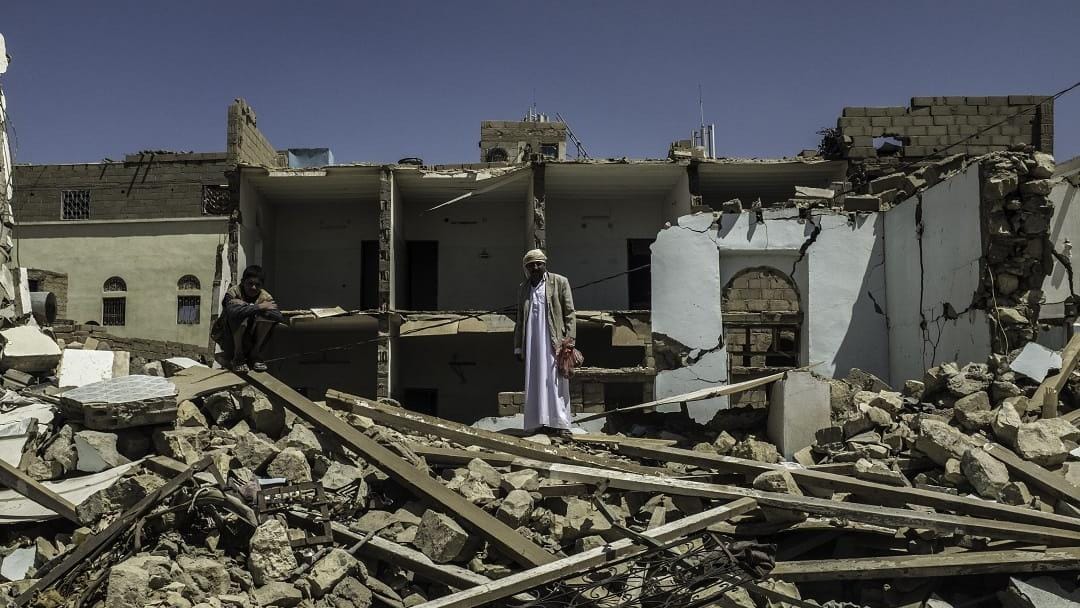The Complex Dynamics of the Yemen Crisis
Context:
The article highlights the humanitarian crisis, while exploring the motivations of Saudi Arabia and the UAE in seeking a resolution. It also emphasizes the challenges faced in the peace process and the implications for regional stability, underscoring the need for a comprehensive approach to address the multifaceted dynamics of the Yemen crisis.
Relevance:
GS-02 (International Relations)
Prelims:
- Houthis
- Location of Yemen and the neighborhood.
Mains Questions:
- Assess the geopolitical interests of regional powers in Yemen and their impact on the peace process. (150 words)
Dimensions of the Article:
- The Stalemate and Humanitarian Crisis
- Seeking a Face-saving Exit
- Challenges to the Peace Process
- Geopolitical Interests and Complications
- Implications for Regional Stability
The Stalemate and Humanitarian Crisis:
- The Saudi-led coalition, comprising Arab forces, launched military operations in Yemen on March 26, 2015, with the aim of preventing the Houthi rebels, a Shia militia with ties to Iran, from gaining control over the country. However, the protracted war has reached a stalemate, with the Houthis maintaining control over the capital, Sanaa, and the vital port of Hodeidah.
- On the other hand, the coalition effectively controls the sea and the sky, as well as substantial portions of the south, impeding the delivery of crucial food, medical supplies, and energy resources to the war-torn population.
- The dire consequences of this conflict include a staggering death toll of approximately 400,000, including 85,000 children, and the displacement of several million Yemenis.
- The humanitarian crisis has pushed 80% of the population, over 20 million people, into a state of dependency, with an alarming six million individuals teetering on the brink of starvation.
Seeking a Face-saving Exit:
- With an estimated expenditure of around $60 billion over eight years, Saudi Arabia is eager to secure an honorable exit from the conflict. The Saudi-Iran accord, mediated by China in March, provided a potential opportunity for such an exit.
- Reports suggest that Iran has expressed willingness to reduce military support to the Houthis and facilitate a peace process, which paved the way for the Saudi-Houthi engagement.
- As a positive outcome, the exchange of prisoners has already taken place, and the blockade on Sanaa and Hodeidah has been partially lifted, enabling the arrival of humanitarian aid and the transportation of Yemeni pilgrims to Mecca for the Haj.
Challenges to the Peace Process:
- Despite the progress made, numerous challenges pose obstacles to the ongoing peace process. The Houthis insist on the Saudi kingdom bearing the financial burden of paying salaries to all government officials, including armed forces personnel, for the preceding years, utilizing Yemen’s oil revenues. However, the Saudi side exhibits reluctance towards funding their former adversaries.
- Moreover, the Houthis seek “compensation” from Saudi Arabia for the damages incurred during the war, a proposition that the Saudis are hesitant to entertain. Another point of contention lies in the Houthis’ reluctance to engage with the Saudi-supported Presidential Leadership Council (PLC), which represents the internationally recognized Yemeni government.
- The Houthis prefer direct negotiations with the Saudis, while the latter aim to serve as “mediators” between the different Yemeni factions.
Geopolitical Interests and Complications:
- The Yemeni scenario is further complicated by the Southern Transitional Council (STC), a movement backed by the United Arab Emirates (UAE) and based in Aden. The STC advocates for the independence of the southern provinces that constituted the former People’s Democratic Republic of Yemen (PDRY) from 1967 to 1990.
- The UAE’s control over ports in southern Yemen, along with other strategic locations in the region, grants it a dominant geopolitical and commercial position in the western Indian Ocean.
- Consequently, the UAE supports the STC’s independence agenda to preserve its advantages. Conversely, Saudi Arabia seeks a united Yemen to exert influence over the southern provinces of Hadhramaut and Al-Mahra, which share a border with the kingdom.
- The proximity of Al-Mahra to the Indian Ocean presents the possibility of establishing an oil pipeline to bypass the Strait of Hormuz. In line with this objective, Saudi Arabia has sponsored the Hadhramaut National Council, which rejects the STC’s call for independence and instead advocates for autonomy within a unified Yemen.
Implications for Regional Stability:
- The complex dynamics of Yemen’s factions, as well as the competing interests of regional powers, are likely to impede the attainment of lasting peace and stability. Despite the apparent Saudi-Iran bonhomie, Iran is expected to maintain its ties with the victorious Houthis, consolidate its influence in Yemen, and potentially strengthen its presence in the Red Sea.
- Consequently, even with the cessation of hostilities, rivalries between Yemeni factions and regional power dynamics will continue to obstruct the path toward a sustainable resolution.
Way Forward:
- To navigate the intricate challenges in Yemen, a comprehensive and inclusive approach is imperative.
- All relevant parties, including Saudi Arabia, the Houthis, and the international community, should prioritize the welfare of the Yemeni people and work towards a political settlement that addresses the root causes of the conflict.
- Moreover, facilitating humanitarian aid delivery, rebuilding infrastructure, and ensuring the long-term stability of Yemen should be paramount considerations.
Conclusion:
The Saudi-Houthi engagement, amidst the prolonged war in Yemen, presents both opportunities and challenges for a peaceful resolution. The complex web of regional interests, including those of Saudi Arabia, the UAE, and Iran, further complicates the path to stability. The plight of the Yemeni people, with an alarming humanitarian crisis and extensive casualties, necessitates urgent action and collective efforts to secure a lasting and inclusive peace





